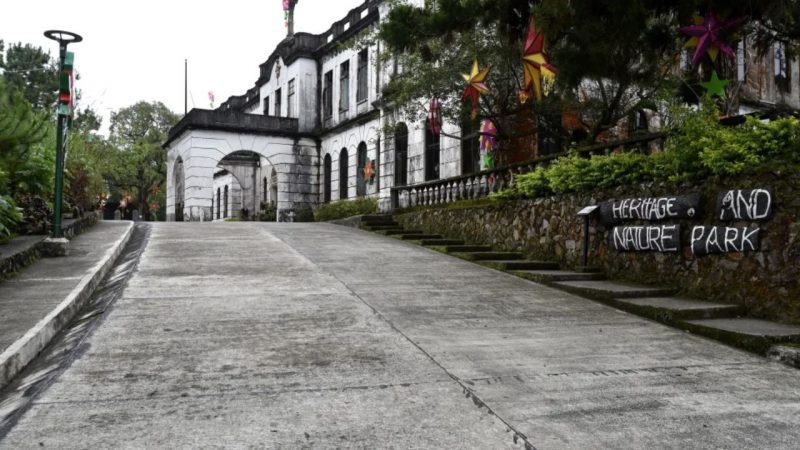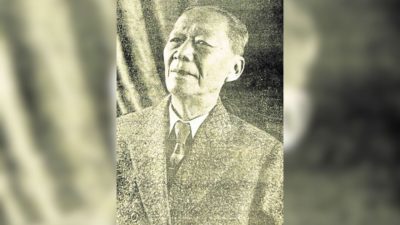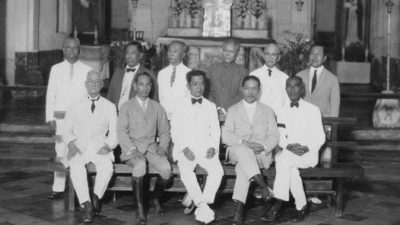The Diplomat Hotel in Baguio City
If the walls of Philippine historical buildings could speak, they would tell a tapestry of bloodcurdling tales. The country’s rich history spans pre-colonial times, the Spanish and American colonial periods, as well as the Japanese occupation. In the Second World War alone, the country bore witness to a million Filipino deaths.
Set against the backdrop of our pristine beaches and lush forests are stories of suffering under colonizers as well as tyrants. Urban legends claim that the tired wandering souls of soldiers and victims of war still walk the Earth.
Whether you’re a history buff or just someone looking for a good scare, here’s a glimpse at the top 10 most haunted places in the country and the story behind each one.
1. Diplomat Hotel (Baguio City)
Would you dare to take a vacation in one of the country’s spookiest hotels?
The Dominicans built the Diplomat Hotel in 1911 as a seminary. At first, it was converted into a school, then eventually a hotel. Rumor has it that when the Japanese conquered Baguio, the nuns and priests who had taken in fleeing Filipinos were all killed and decapitated. Over the years, many residents and visitors report hearing screams and seeing ghosts with severed heads. To add to the spookiness, the hotel’s manager, Tony Agpaoa, also died in the place likely from a heart attack.
2. Fort Santiago, Intramuros (Manila)
How about a scenic tour of a historic site that turns into something spooky at night?
Before the country was liberated, Fort Santiago was the center of both the American and Spanish colonial governments. The city’s historic walls still stand tall and proud during the day, but when evening falls they take on a dark, spooky air. There have been many reported sightings of ghosts of Filipino soldiers in the area. Residents also claim to hear screaming from the dungeons. This isn’t surprising, given that the Japanese tortured and killed countless Filipino soldiers and guerillas here during World War II.
3. Manila Film Center (Pasay City)
Are you scared of the dark? What would you do if you were watching films and something cold brushed on your leg?
When Imelda Marcos was the first lady, she had a Parthenon-style cinema center built for the 1st Manila International Film Festival in January 1982. The construction of the Manila Film Center was reportedly rushed by hiring 4,000 laborers to work around the clock. The film center’s ceiling caved down around 3 a.m. on November 17, 1981, trapping dozens of workers beneath its rubble. No one seems to know the truth about whether all workers were rescued or retrieved, not even the film center or the Pasay City police. Many people believe, however, that the building is haunted by the ghosts of construction workers who died in the rubble as work proceeded on the Film Center in order for it to be completed on time. One survivor claims that many soldiers were unaccounted for and supposedly buried alive in wet cement. Many doubt project contractor Eliodoro Ponio’s claims that he and his team were able to recover the remains of each victim.
There’s even a film about this.
4. Laperal Mansion (Baguio City)
Before being the site of the Philippine Bamboo Foundation’s Ifugao Bamboo Carvings Exhibit, the Laperal White House was shrouded in mystery. Caretakers reported seeing a woman dressed in white and a small child inside.
The Japanese reportedly used the mansion as a torture chamber during World War II. Filipino women were raped in the bedrooms, while spies were tortured in the living room. A worker reportedly even committed suicide there.
This is reason enough for caretakers, who claimed to have seen apparitions several times, to stay vigilant while inside the house. Even taxi drivers supposedly refuse to travel down Laperal Mansion’s road at night because of the sightings.
5. Bahay na Pula (San Ildefonso, Bulacan)
A field in Bulacan still bears the ruins of the so-called “Ilusorio House”. The blood-colored mansion was once stood witness to the Japanese forces’ cruelty during World War II. In 1944, the Japanese razed Pampanga’s Barrio Mapanique to the ground, murdering all the men. The Japanese troops then enslaved the women, ordering them to carry their loot to the Ilusorio House, which was converted into a military prison.
They dragged women from all over Pampanga and Bulacan to the Ilusorio House to rape and enslave them. If any woman refused, she would be subjected to torture or be executed with bayonets. Most “comfort ladies” who survived are already gone, but their trauma, along with those of the Bahay na Pula, will carry on for generations to come.
6. Lambusan Public Cemetery (San Remigio, Cebu)
As a public cemetery, it is reportedly a favored haunting place of the dead. When the family members of the departed can no longer afford to pay the rent on the graves, their loved ones’ remains are placed in a communal space.
It’s known as one of Northern Cebu’s most desolate and depressing cemeteries. It’s impossible not to see skulls and bones just scattered in the area.
7. Balete Drive (Quezon City)
Fancy a midnight road trip? Don’t go wandering alone in Balete Drive.
Some routes, like Balete Drive in Quezon City, should not be driven alone.
All countries have their own version of an urban legend about a ghost lady dressed in white. In the Philippines, the most famous is the White Lady of Balete Drive. Some think the white lady often seen there is the ghost of a young girl who died in a car accident, while others believe it was a young lady who died during the Spanish colonial era.
Balete trees or strangler figs are a type of fig that begins by entangling itself around trees, eventually taking over and killing the host tree. In Filipino superstition, the cutting down of Balete trees brings bad luck, and sometimes even death, because they are the dwelling place of supernatural beings such as tikbalang and diwata. As seen in Trese, both in the comics series and Netflix’s adaptation, they are often the site for magical rituals.
8. Malacañang Palace (Manila)
For some, having a paranormal experience at the Palace is more of a luxury than a haunting. It is alleged that several staff have reported seeing a kapre and a faceless ghost while on duty. Some people also think that the spirit of the late president Manuel L. Quezon haunts the palace.
While others have reported seeing a lady clad in black peering out of a window.
9. Clark Air Base Hospital (Angeles, Pampanga)
The building that now sits abandoned was once used as a military hospital during World War II and the Vietnam War. Residents and paranormal investigators claim that the place is haunted, with reports of hauntings and sightings of soldiers’ ghosts.
10. Balay Negrense (Negros Occidental)
Thanks to the locals’ preservation efforts, this historic home is both a tourist attraction and a museum. But if your visit is purely for leisure or education’s purpose, here’s a word to the wise: don’t go looking into the mirrors because you might catch a glimpse of something more than you asked for.
Source: Yahoo News / Credits to Ana Catalina Paje
Ed’s note: The author (ACP) is a development journalist passionate about grassroots communication geared towards genuine social change. She also writes about showbiz, lifestyle, and all things Pinoy pride. The views expressed are her own.
(Filed by: JR AMIGO/ai/mnm)







